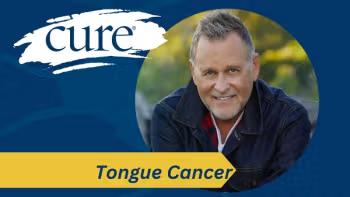
With Cancer, Waiting Is the Hardest Part
Editor’s Note: This piece was submitted by a contributing writer and does not represent the views of CURE Media Group.
I'm not the most patient person. Traffic jams, lines for a movie or restaurant and waiting to open holiday presents are all things that I prefer to avoid.
I first discovered an abnormal growth on the side of my neck in November. Confirming that it was stage 4 oropharyngeal cancer and scheduling treatment took several months, with my first official day of chemoradiation being Jan. 18, 2016. I remember how difficult it was to wait months for therapy to begin. It was perhaps more difficult for me because every time I looked in the mirror, my eyes went directly to the large lump on the side of my neck. I couldn't help but wonder how much the cancer was growing and spreading in the absence of treatment during this period.
Despite spending so many years at the helm of a few oncology-focused biotechnology companies developing immunotherapies, radiopharmaceutical agents and supportive care oncology products, I didn't fully appreciate the length of time it takes a patient to travel from initial discovery, diagnosis and ultimately treatment. For example, my family physician first treated the growth as an infection by prescribing an antibiotic. When that failed, I was referred to an ear, nose and throat doctor who performed the biopsy which ultimately resulted in my formal cancer diagnosis. It then took weeks for me to research and schedule initial appointments with medical and radiation oncologists before treatment planning would begin.
However, now I face waiting for something even more difficult — the answer to whether or not my initial therapy was effective. I finished my seven-week course of chemoradiation during the first week of March 2016. However, it won’t be until May or June that I will undergo my first post-therapy positron emission tomography (PET) scan. The reason for waiting several months post-therapy is that the chemotherapy and radiation therapy used in the treatment of oropharyngeal cancer can result in tissue changes to the head and neck that make it challenging to distinguish disease recurrence versus treatment-related changes on a PET scan.
A negative PET scan a few months after chemoradiation therapy is highly predictive of treatment success in head and neck cancer, so I am clearly hoping for that result. In contrast, a positive PET scan could lead to subsequent surgery for a planned neck dissection to remove any/all residual disease in the neck.
There is waiting to be told you have the disease, waiting to start treatment, and now waiting to determine whether or not the cancer has returned. Clearly, one of the hardest parts about having cancer is the waiting. But based on my personal experience and in reading various cancer patient blogs, anxiety about cancer returning is the most difficult and debilitating form of waiting. One published study even suggests that post-cancer anxiety is likely to be a problem in long-term cancer survivors.
Doctors and nurses were excellent about making me aware of the possible side effects of chemotherapy and radiation therapy and what to expect during treatment. What needs to be discussed more openly and proactively is the potential psychological impact following cancer treatment.



